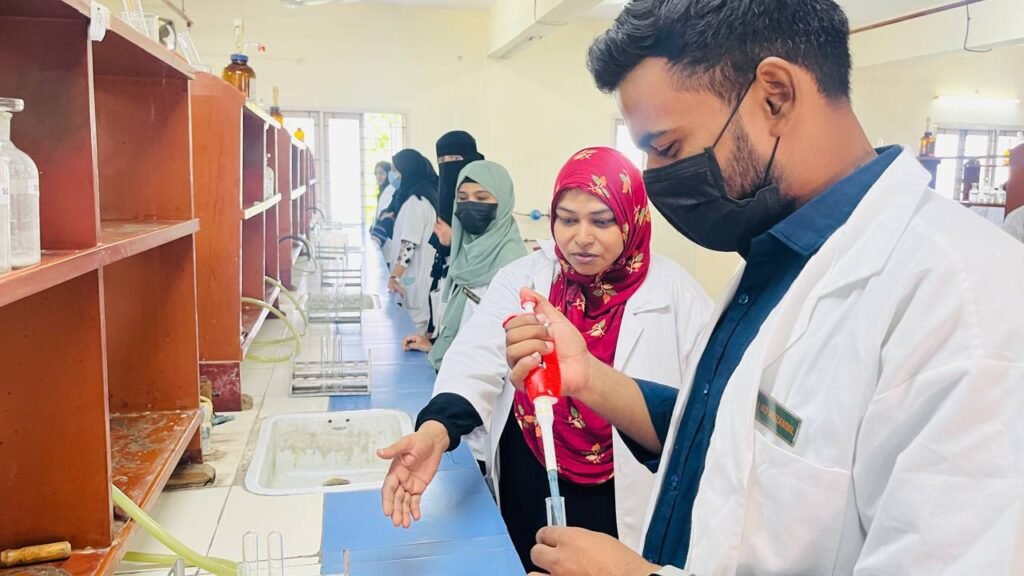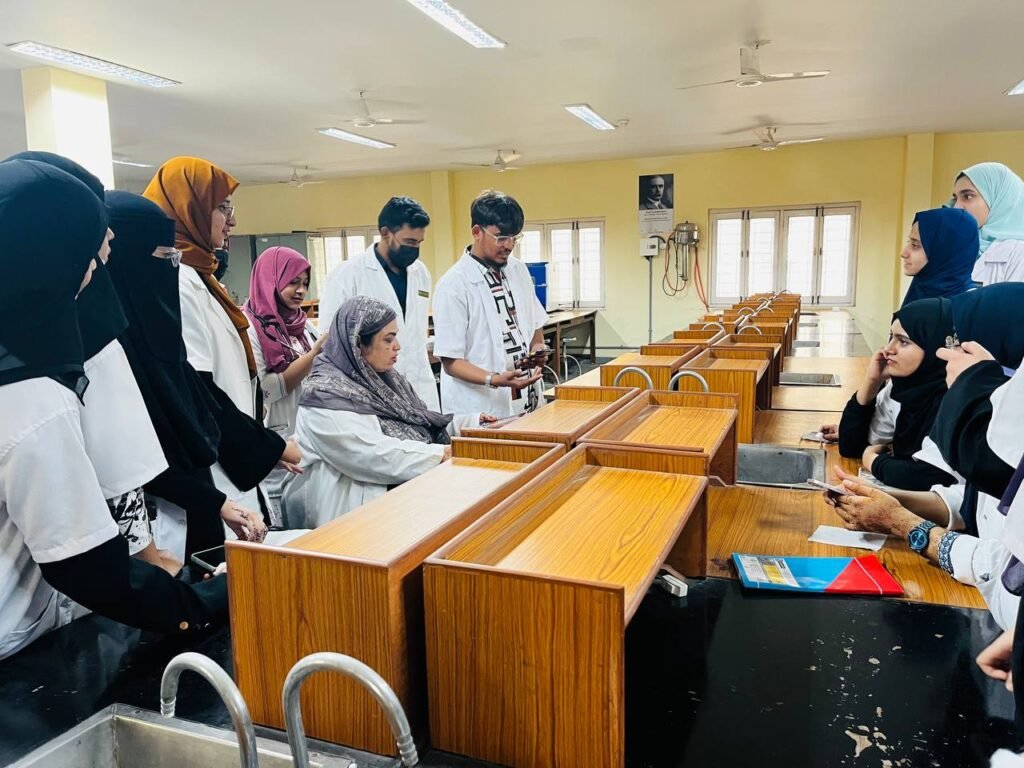Biochemistry Lab
Biochemistry laboratories are specialized facilities equipped to analyze the chemical processes within living organisms. These labs are crucial for understanding the molecular basis of life, enabling breakthroughs in medicine, genetics, and biotechnology.
At the core of a biochemistry lab are various instruments such as spectrophotometers, centrifuges, and chromatography systems. Spectrophotometers measure the absorbance of light by samples, crucial for quantifying DNA, RNA, and proteins. Centrifuges separate components based on density, essential for isolating cellular organelles or precipitating proteins. Chromatography systems, including HPLC (High-Performance Liquid Chromatography), separate and identify compounds in a mixture, aiding in the analysis of metabolic pathways.
Techniques commonly employed include PCR (Polymerase Chain Reaction) for amplifying DNA, electrophoresis for DNA, RNA, and protein separation, and mass spectrometry for detailed molecular analysis.
Safety is paramount in biochemistry labs, with protocols in place for handling hazardous chemicals, biological specimens, and ensuring proper waste disposal. Personal protective equipment (PPE) such as lab coats, gloves, and safety goggles are mandatory to protect researchers.
Biochemistry laboratories thus play an indispensable role in advancing our understanding of biological systems, driving innovation in health and science.

Anatomy Lab
An anatomy laboratory is a specialized facility where students and researchers study the structure of living organisms. Essential for medical and biological education, these labs are equipped with anatomical models, dissection tools, microscopes, and imaging technology like MRI and CT scans. In these settings, students dissect cadavers and examine specimens to understand human and animal anatomy in detail. This hands-on experience is crucial for mastering the complexities of the body's systems and structures. Advanced labs also incorporate virtual dissection tables and 3D modeling software, enhancing traditional learning methods. Anatomy labs adhere to strict ethical and safety standards to ensure respectful handling of specimens and a safe learning environment. These laboratories play a vital role in developing the skills necessary for medical and health science professionals. Anatomy laboratories provide a bridge between theoretical knowledge and practical application, fostering a deep understanding of anatomical variations and pathologies. Students learn teamwork, precision, and critical thinking as they navigate the intricacies of human and animal bodies. These labs are essential for honing skills in surgery, diagnostics, and medical research, ensuring future healthcare providers are well-prepared for diverse clinical challenges.

Physiology Lab
A physiology laboratory serves as a vital hub where students and researchers delve into the intricate functions of living organisms. Equipped with state-of-the-art instruments such as electrocardiograms, spirometers, and spectrophotometers, these labs enable hands-on exploration of physiological processes. Students conduct experiments to measure parameters like heart rate, blood pressure, and metabolic rates, gaining practical insights into how organisms function at molecular, cellular, and systemic levels. Advanced laboratories often integrate computer simulations and real-time data analysis tools, enhancing learning experiences and facilitating research on topics ranging from muscle contraction mechanisms to neural signaling pathways. Ethical guidelines govern the humane treatment of animals used in experiments, ensuring respect and care. Physiology labs are pivotal in training future healthcare professionals and researchers, equipping them with the skills needed to understand and address complex physiological phenomena in diverse biological contexts.


